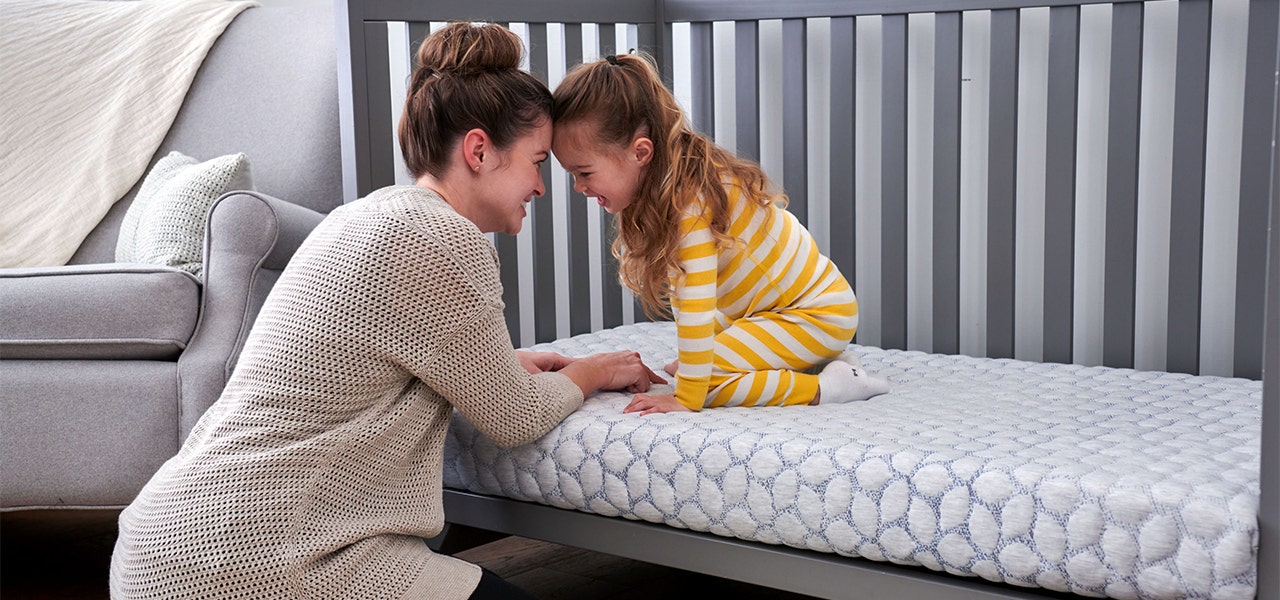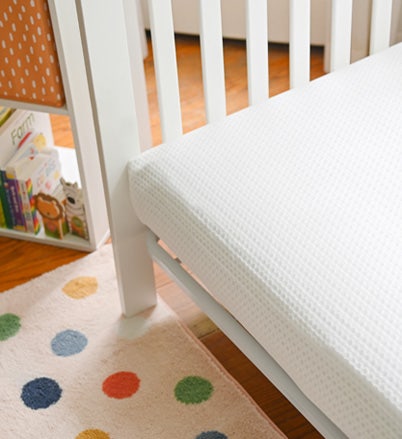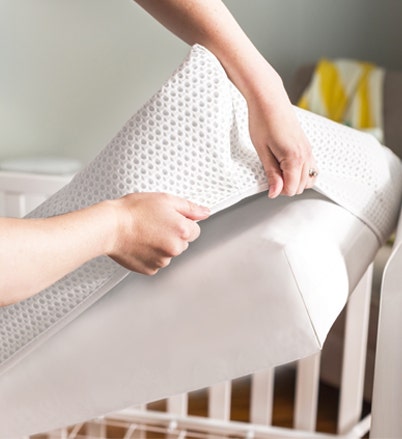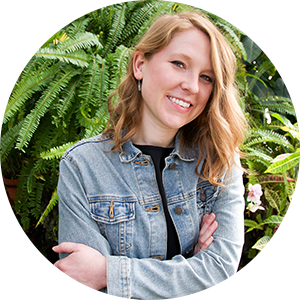What Are Endocrine Disruptors? (+ How to Avoid Them)
Lullaby Earth welcomes Abbie Davidson, Editor of The Filtery, to our blog! The Filtery is a website that provides curious citizens with well-researched and practical solutions for reducing toxins in their homes and bodies.
With environmental toxins in the news frequently these days, chemical-related vocab gets thrown around a lot. PFAS, BPA, phthalates … It can be difficult to keep it all straight!
How can you truly make progress in minimizing exposure to environmental toxins if you don’t really know what all of the words mean?
So, in this article, I’m going to help you understand one of the most important classes of toxic chemicals: endocrine disruptors.
I’ll give you all the basics so that you can not only understand what these chemicals and their potential problems are, but also how to minimize them in your home.
What Are Endocrine Disruptors?
Endocrine disruptors—also called endocrine-disrupting chemicals, or EDCs for short—are chemical compounds that interfere with the normal functioning of the endocrine system.
What’s the endocrine system? It’s your hormones!
(You’ve probably heard the term “hormone disruptor” before, too. There is no difference between “endocrine disruptors” and “hormone disruptors”; these terms can be used interchangeably.)
Basically, the endocrine system is a network of glands (including the pituitary, thyroid, ovaries/testes, and others) that produce and release hormones. These hormones help regulate many important bodily functions, including body temperature, blood pressure, metabolism, stress response, red blood cell production, tissue repair, and more.
EDCs work by causing some sort of change in the way the body’s normal hormone systems work.
Think of it this way: imagine the cells in your body as rooms with special locks on their doors. These locks are meant for specific keys, which are our body's hormones (like estrogen, for example). When the right key fits into the lock, the door opens, and the cell gets a message to do something (like do any of those things mentioned above—change your blood pressure, react to stress, grow, or something else).
EDCs are like sneaky fake keys. For example, when BPA gets into our bodies, it can trick the locks because it looks a lot like the estrogen key. So, BPA can fit into the locks and give cells the wrong message, causing them to behave in ways they shouldn't.
When those messages get mixed up, it can lead to health problems.
What Are Some Endocrine Disruptor Examples?


First, it’s important to understand that an endocrine disruptor is not a specific type of chemical, but rather a category, or classification. There are a lot of different types of chemicals that are classified as EDCs:
- Bisphenols: This family of chemicals includes things like BPA, BPS, and BADGE, which are found in some plastics, epoxy resins (used in glues, can linings, and other coatings), thermal receipt papers, and more.
- Phthalates: This chemical class includes things like DEHP, DBP, and others. They’re used in plastics to increase flexibility, and also in scented personal care and cleaning products. Phthalates are also used in many conventional crib mattresses, which is why opting for non-toxic is so important!
- Per- and Polyfluorinated Substances (PFAS): These “forever chemicals” are used in a wide variety of products, including non-stick cookware, water-repellent clothing, food packaging and, again, crib mattresses. They’re also used in fire-fighting foams, industrial lubricants, and are commonly found as a contaminant in drinking water.
- Pesticides: Some pesticides, such as DDT, atrazine, and others, are also known endocrine disruptors. Some of these chemicals have been largely banned (although they still linger in the environment), while others are still widely used today.
- Synthetic Flame Retardants: Certain types of chemical flame retardants, such as PBDEs, are used in a variety of products including furniture, electronics, and textiles. Learn more about the risks of flame retardants here.
- Dioxins: These man-made chemicals are released during various industrial processes. They are “persistent organic pollutants,” meaning they are very slow to break down. They accumulate in the food chain and are lipophilic (or “fat-loving”), which is why they are often found in fatty animal-based foods like meat, fish, and dairy products.
- Polychlorinated Biphenyls (PCBs): From the 1930s to the 1970s, these dioxin-like chemicals were widely used in electrical equipment, paints, adhesives, and certain plastics. Although banned in many countries, they still persist in the environment.
- Heavy Metals: Some heavy metals – including lead, cadmium, arsenic, and mercury—can also disrupt proper hormone functioning. These metals are found throughout our environment, including as contaminants in food and water.
- Antibacterials: Certain ingredients used in antibacterial products, such as triclosan and triclocarban, can also cause endocrine disruption. The good news is that in recent years, these chemicals have largely been phased out of many cleaning and personal care products.
- Parabens: Chemicals like ethylparaben, butylparaben, methylparaben, and others are often used as preservatives in cosmetics and personal care products.
How Endocrine Disruptors Can Impact Health


Because of the way hormones work, a slight change in normal hormonal processes caused by EDCs can lead to impacts that are widespread and long term. Think of it like a hormonal butterfly effect… One slight change may not be noticeable, or even do any initial harm at all. But that small alteration could cause a cascading effect, the consequences of which may not show up until decades later. To give one example, fetal exposure to BPA can increase breast cancer risk in adulthood, “long after cessation of exposure.”
I don’t say this to scare you or stress you out, but rather to explain the way EDCs tend to work when it comes to their potential health effects. They’re different from things like allergens or irritants, whose effects are often much more noticeable and acute compared to endocrine disruptors.
So all of that said, let’s take a brief look at the potential health effects of EDCs. They include:
- Reproductive health issues (including reduced fertility in both men and women, menstrual irregularities, endometriosis, and more)
- Developmental effects (including ADD/ADHD, Autism spectrum disorder, and others)
- Neurological problems (like mood disorders and memory impairments)
- Altered immune function (including increased susceptibility to infection)
- Endocrine disorders (like thyroid dysfunction and adrenal disorders)
- Metabolic disorders (like type 2 diabetes)
- Cancer of various types
- Cardiovascular problems (such as heart disease and high blood pressure)
- Decreased bone health
Additionally, babies and children (even starting at pre-conception) are more vulnerable to the potential effects of endocrine disorders for a few reasons.
First, the brains and bodies of little ones are still developing, which means that slight hormonal changes can have more drastic effects down the road.
Second, pound-for-pound, babies eat more food, drink more water, and breathe more air compared to adults. That means that, for their body weight, they will ingest more toxicants from their food/water/air compared to their parents.
Lastly, babies crawl around on the floor more and have more hand-to-mouth contact. This can lead to more ingestion of toxicants from things like household dust that gets onto their hands.
All of these reasons are why so many parents are doing what they can to decrease their families’ exposure to EDCs.
Common Sources of Endocrine Disruptors (and Practical Ways to Minimize Your Exposure)


It goes without saying that it can be very stressful to think about how to avoid EDCs… But research shows that taking steps in even just one area of your life may have a positive impact on future health.
For example, a study published in March 2023 showed that when women switched to phthalate- and paraben-free personal care products for just 28 days, they saw a “significant reversal of known cancer-associated cell signaling pathways, significant shifts of known cancer-associated genes to a ‘normal’ profile, and significant reduction in phthalate and paraben urine levels post-intervention.”
In other words, just switching to personal care products that are free from a few specific EDCs can make a measurable difference in future breast cancer risk.
So, knowing that your daily choices can in fact make a positive impact on your and your family’s long term health, here are some practical steps you can take to start reducing EDCs:
1. Aim for Progress Over Perfection
First and foremost: remember to take things one step at a time. Keep in mind that too much stress can also have a negative impact on your health… And having a new baby is stressful enough!
Don’t try to get rid of EDCs completely. It’s impossible to do on an individual level; we need more legislation and societal-level changes in order to truly solve this problem.
So, do what you can and focus on what you can control. Remember that living a non-toxic lifestyle is a marathon, not a sprint.
2. Clean More… With Fewer Products
As mentioned above, multiple studies have shown that endocrine disruptors such as PFAS, flame retardants, and phthalates can settle into household dust, and that this can be a significant source of exposure to these chemicals.
So, simply having a regular cleaning routine can reduce your family’s exposure with little to no extra financial cost. Here are a few tips for you:
- Use wet dusting, so that you actually trap the dust (and toxicants) and wash them down the drain, instead of just stirring them up into the air (where you can breathe them in).
- If possible, skip the broom and use a vacuum cleaner with a HEPA filter instead. Like dry dusting, sweeping with a standard broom can actually increase the amount of toxicants in the air for a period of time. Cleaning with a vacuum that adequately traps dust and other particles inside the appliance is your best bet.
- Household cleaning supplies can be a major source of indoor air pollution. And most of the harsh chemical cleaners sold on retail shelves aren’t even necessary! I recommend switching to a truly all-purpose non-toxic cleaner, such as Branch Basics or Healthybaby. That way, you don’t have to worry about vetting the ingredients in ten different products, and you can do all of your household cleaning with just one effective solution. It can save you time, money, and mental energy.
3. Simplify Your Personal Care Routine
Much like with cleaning products, most people use a lot of personal care products… and each individual item is a potential source of EDCs.
So, consider simplifying your personal care routine even if it’s just for a short amount of time. Could you buy fewer skincare products? Could you stop wearing perfume or nail polish for a while? Could you skip all the extra hair products and cosmetics and just stick with a few basics?
Simply reducing the number of products you use can minimize your exposure to a variety of potential toxicants. Then over time, if you want to start re-introducing those types of products into your routine, then you can slowly find safer versions of them, one by one.
4. Source Your Baby’s Food Consciously
Unfortunately, problems with baby food have made the headlines multiple times in recent years, from the 2022 infant formula shortage, heavy metals found in baby food (including homemade versions), and toxins in breast milk.
Again, you can’t completely solve this problem as an individual. But you can take steps to ensure that the food your little one is consuming is as healthy and low-tox as possible.
The Clean Label Project is a great resource for finding safer foods. They test and certify products not only for “clean” intentionally-added ingredients, but also for environmental contaminants. Products that have earned their Purity Award have been tested for a long list of different chemicals, including things like pesticides and heavy metals. You can search their database for baby and toddler foods that have been tested and earned this certification.
5. Filter Your Drinking Water
Considering the amount of water we ingest on a daily basis, prioritizing water filtration is another practical way to decrease endocrine disrupting chemicals.
Everyone’s water filtration needs are different, so it’s difficult to recommend one specific type of filter. But in general, a high-quality reverse osmosis filter or water distiller are both good choices for water filtration because they can remove nearly all types of contaminants.
Depending on your living situation, you may choose to invest in a whole-house filtration system, an under-the-sink filter, or a countertop option. If budget constraints are an issue, remember that usually, any filter is better than no filter (as long as you’re actually changing the filters regularly!).
Final Thoughts on Reducing Your Family’s Exposure to Endocrine Disrupting Chemicals


My last tip for you when it comes to reducing EDC exposure on a long term basis is to support legislation that works to get these chemicals out of our environment.
Unfortunately, there is very little policy restricting the use of EDCs in consumer products and manufacturing, which makes it incredibly difficult for individuals to make changes in their lives. So, you can do things like contacting your representatives to make your voice heard, supporting non-profit organizations such as Toxic Free Future, and voting for officials who prioritize environmental safety.
This is by no means an exhaustive list of ways to minimize your exposure to endocrine disruptors, but implementing the suggestions here can make a real difference in the amount of EDCs you and your baby absorb.
By taking steps to reduce your family’s exposure to endocrine disruptors and other environmental toxicants, you are making a long term investment in your and your child’s health.
Looking for more tips on non-toxic living? Check out Lullaby Earth’s Quick Guide to Indoor Air Quality!

 Baby
Baby

 Kids
Kids

 Learn
Learn

 FIND A STORE
FIND A STORE CONTACT
CONTACT



